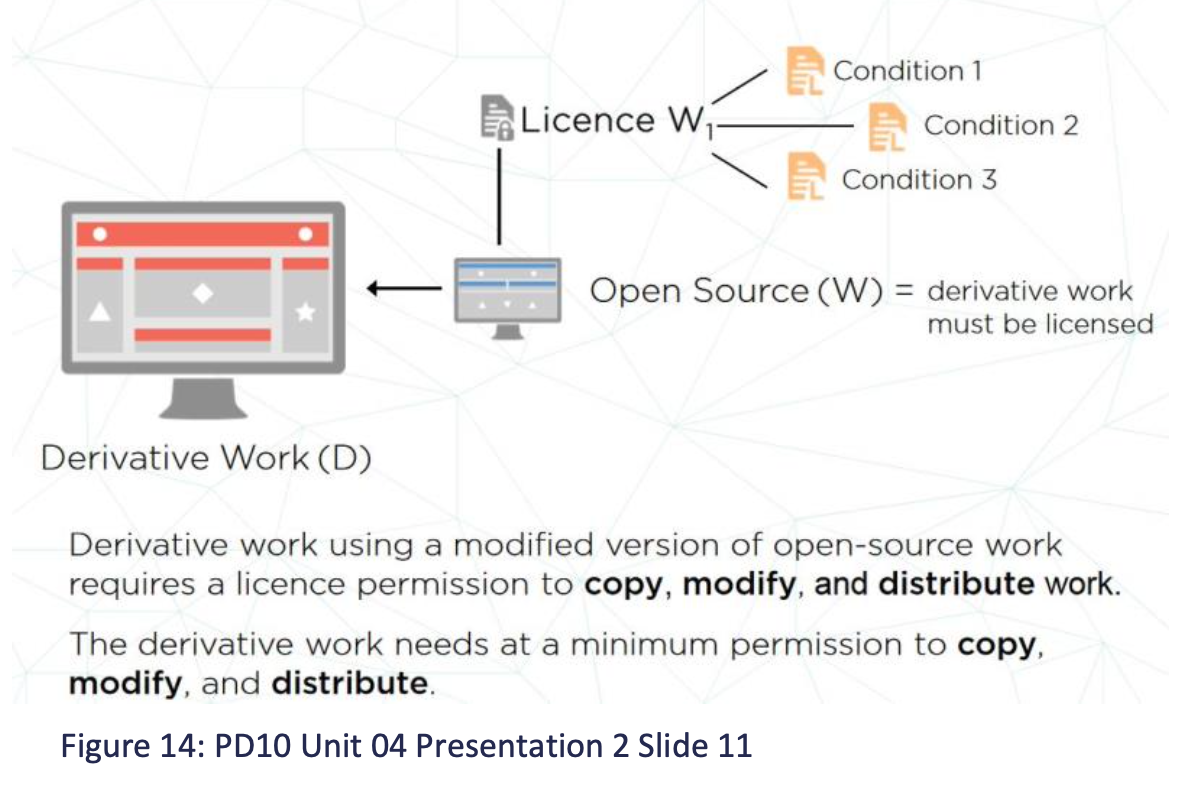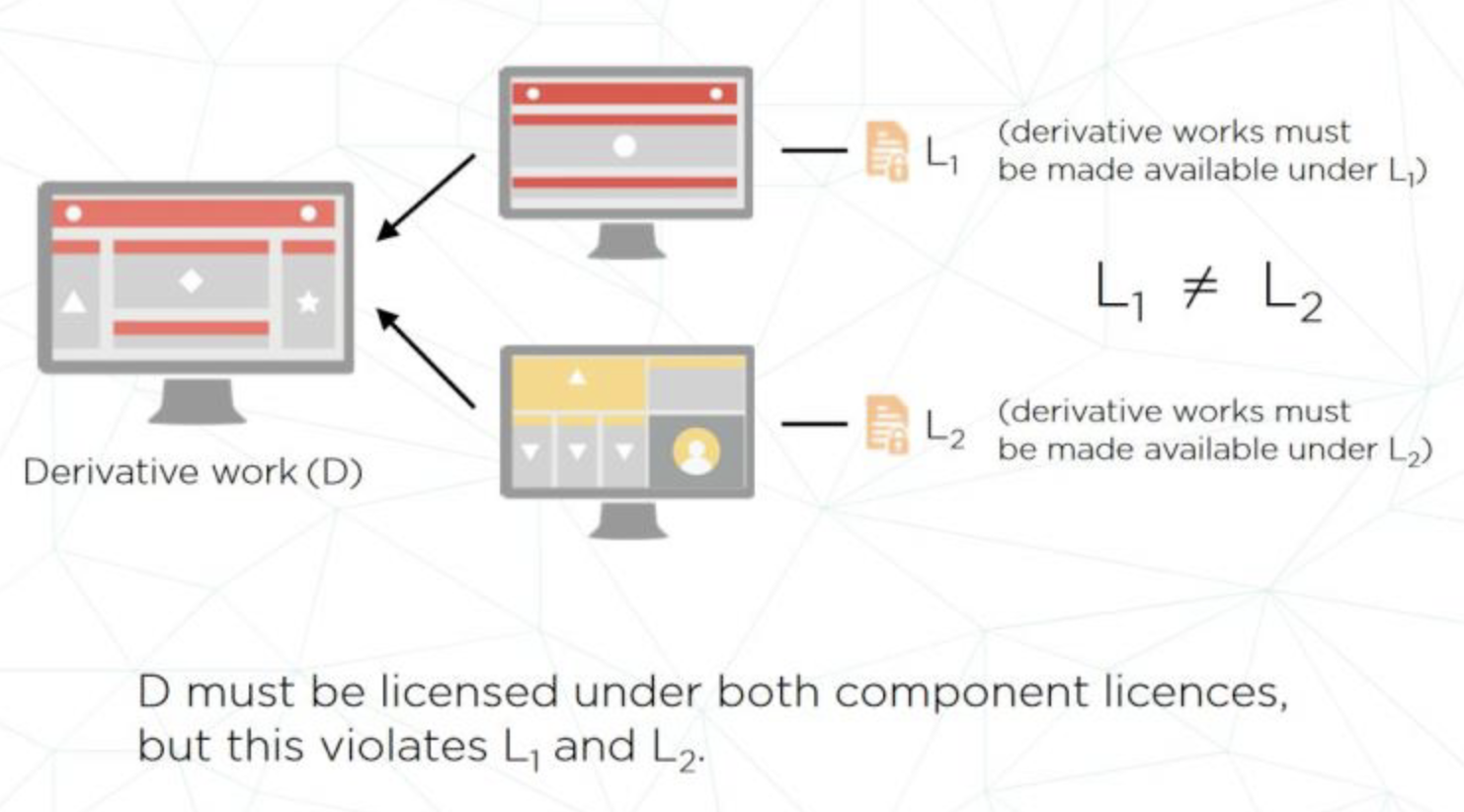License
Collective and Derivative Work
Licensing, and terms and conditions, are even more complicated when we consider the usage of licensed works in the creation of a new collective or derivative work.
In both cases, the existing works might be protected by an IP mechanism like copyright. The new collective or derivative work is also entitled to IP protection (for the creative decisions that go into the selection and organization of the existing works as well as any new material that is created as part of the new work) but only if the creator acquires appropriate permissions to use the existing works.
The creator has such permissions if they are the ones who hold the IP to those works or if the works reside in the public domain. Otherwise, they need to obtain a licence to use the works.
What is a License?
License
A license is essentially a form of permission to do something that would be forbidden without a license.
Example: doctors need a medical license to practice medicine; people driving cars need a drivers’ license to operate a car on the road.
In the case of IP protection, a licence from an IP holder is permission to exercise one or more of the IP holder’s exclusive rights. The IP holder is the licensor and the party who is granted the licence is the licensee.
A licence is specific about which special privileges are granted to the licensee. For example: a creator might seek a license that grants multiple privileges to an existing work:
- Make derivatives of the existing work
- Make copies of it
- Distribute it
- Sell it
Fifa Soccer Video Games
EA Sports need a lot of money and effort to acquire the license to the IP and personal property that appear in the video games
For instance:
- Licenses to use images of real football players, their uniforms, the stadiums that they play in
- Licenses to use players’ real names and likenesses
- Licenses to use club names, crests, and trademarks
- Licenses to use leagues’ crests, tournament structures, championships, and trophies
- License to the songs in the soundtrack
All of the licences must grant permission to copy, distribute, and sell animated copies of the original IP.
Public Licenses
In some cases, works are made available for public uses (often for free) through public license that promote the sharing of creative works.
Creators are sharing their work for free.
Now, why would anyone give away their IP rights rather than try to profit from them? often because the author wants to see their work used, shared and improved on - and the author themself might not have the time, resources, or skills to make the work better. So instead, they release their work to the public, hoping others will take on the tasks of improving it. → Does this have to do with like Open Source Project? YES
Consult Open Source License And also Creative Commons License
Public License vs. Public Domain
Works in the public domain can be used freely, for any purpose, without any restrictions of any kind.
Works that are available through a public license usually have some restrictions on their use. For example: it may be that only some of the IP holder’s rights are shared with users, under certain conditions (e.g., for non-commercial uses only), and it is almost certainly the case that the author’s moral rights have not been waived.
Permissions and Conditions
Suppose someone is creating a Derivative Work D that uses a modified version of an open-source work W and is to be distributed to others. At a minimum, they need permission to copy, modify and distribute work W.

License Compability
License Compatibility In general, licence compatibility is a major problem in any software product that makes use of multiple licensed software components
L1 and L2, where each licence requires that derivative works be made available under the same licence as the component. In this case, a derivative work that uses both components must be licensed under both components’ licences – a condition that violates both licences!

What’s the solution?
- Maybe the creator can licence different parts of the derivative work under different licences

But software developers can sometimes satisfy the licences by cleverly modifying the design. Rather than creating and distributing modified versions of existing components, a creator might distribute software patches.
How does it work??
Like does anyone actually do the above?
the textbook describes a method to circumvent license conflicts by distributing only patches for modifications. Users download the original software components from their original creators and then apply the patches to create the derivative work themselves. This avoids licensing issues because the derivative work is not distributed; only the original components and patches are.
This is like a really stupid loophole. I am not the one distributing. I am merely providing patches that you can download.
